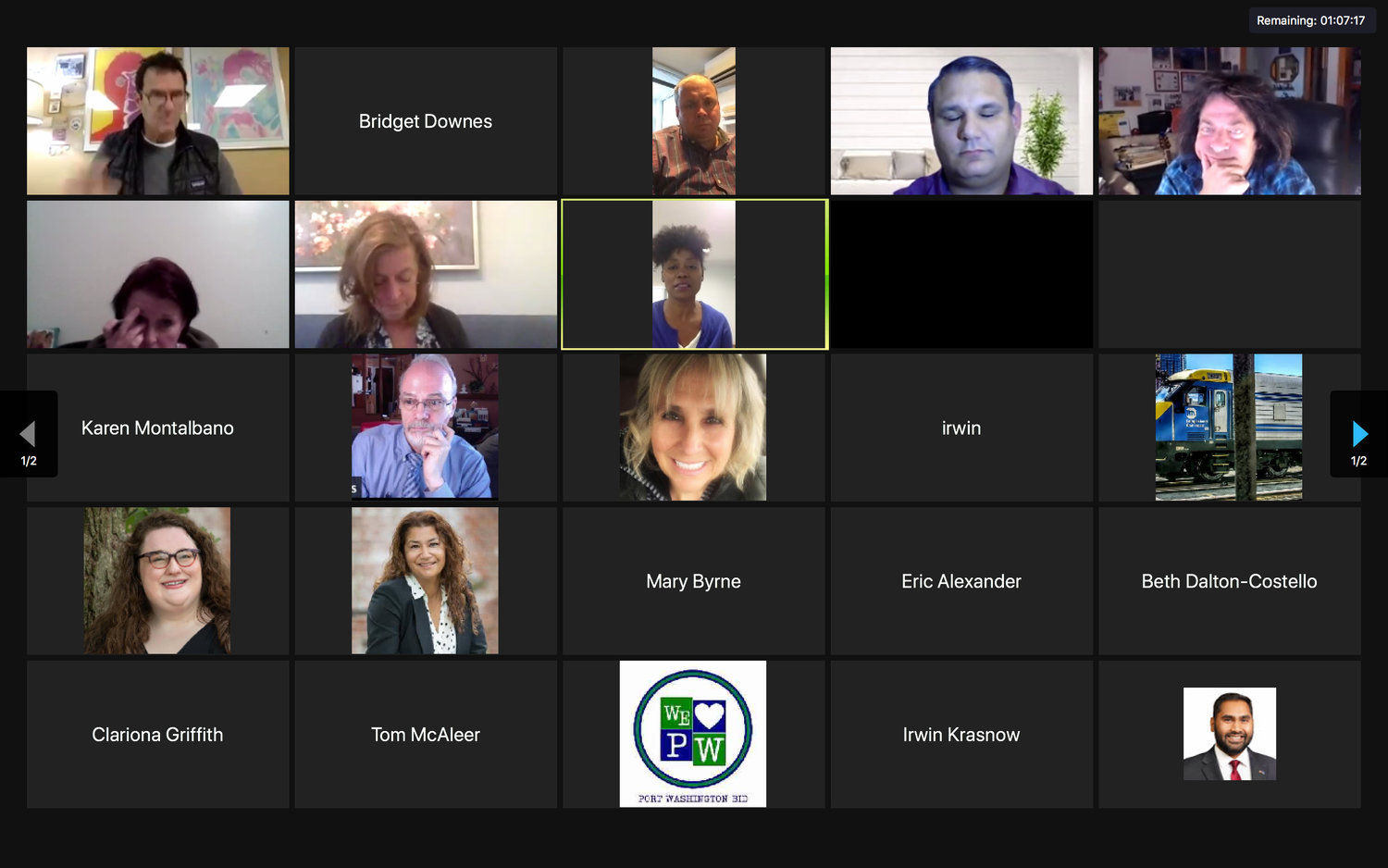Sunday, April 28, 2024
 50.0°,
Overcast
50.0°,
Overcast
Baldwin business owner talks struggles, successes amid pandemic

A Baldwin business owner recently shared her struggles and successes throughout the last nine months of the pandemic as a panelist at the 19th annual Long Island Smart Growth Summit, a three-day conference that took place virtually this year.
The summit, which brings together civic groups, chambers of commerce, elected officials, developers and other professionals, was “an event that takes on more importance as we seek to assist our local communities through economic recovery guided by place-making principles,” organizers said in a statement.
The program featured discussions and workshops on Zoom to address regional and local issues associated with downtown redevelopment, regulatory relief and economic recovery amid the Covid-19 crisis.
Antoinette Burrows, owner of Sweet & Savory Café, on Merrick Road in Baldwin, spoke as a panelist in the session “Keeping Downtown Restaurants Open,” moderated by Joseph Garcia of the Farmingdale Chamber of Commerce.
Burrows opened shop in 2014 and has played a key role in revitalizing Baldwin. “We’re super-excited for a healthy, transformative, vibrant downtown area,” she said. “With that said, Covid has put a little damper on that.”
The area is undergoing the Baldwin Downtown Revitalization Initiative, for which it received a $10 million state grant last year. Burrows is a member of the Local Planning Committee, a group comprising area community leaders and business owners who have helped to draw up plans for the area, but the pandemic has slowed progress.
And as state restrictions, curfews and cold weather burden local businesses, including Burrows’s, it falls upon the business owners to find creative ways to stay afloat.
Burrows said she reduced costs by cutting non-essential services like the internet and the phone line and explored new ways to market her products, like sharing photos on social media.
“This season is peak season for a coffee shop,” she said. “The summer wasn’t peak, but this season is peak, and right now we’re still trying to figure out how to do that in the cold without bringing people in.”
She hasn’t opened her doors since the shutdown in April, relying solely on takeout for the past eight months.
And while the 10 p.m. curfew for restaurants does not affect her operations, her lack of outdoor space and parking spots on a busy road presents challenges. She is considering adding a takeout window since hosting sidewalk dining is not an option.
“The traffic is insane,” she said. “The parking is, I mean, close to none, so it just makes it really difficult for me. If they were to make some kind of sidewalk for dining, I think that would help that corridor in particular.”
“Have you seen the big to-go orders for events, or you’re not really seeing that?” Garcia asked about catered events.
Burrows said large orders are down about 50 percent, adding that she has transitioned to different types of orders, including special packages like picnic baskets and engagement party boxes.
Additionally, she now faces newfound competition online.
“Once upon a time as a business owner, I only had to compete with the other businesses that were in the immediate radius,” she said, “but now I’m competing with individuals online trying to sell the same thing or close to it.”
“Definitely hearing about competition coming from Instagram sorts of places that are out there,” Garcia said, “and individuals, especially in the baked goods section.”
It then leaves consumers, Burrows explained, who are limiting their spending to choose between the brick-and-mortar shop, which may be pricier, or the individual selling goods solely online.
Garcia also inquired about thoughts on third-party delivery services like Grubhub and Uber Eats.
Burrows, who said she had not originally considered using the services, had to pivot and figure out a way to remain open, and one way to increase profits is to use those services. But she remains apprehensive.
“The percentages and how they work out is not beneficial to the business owner at all, and I don’t even think it’s fair,” she said, adding that local officials should look into it.
Mike McElwee, co-owner of Local Burger Company, said he has a “love-hate relationship” with the services. Between the 10 percent service charge and delivery fees, “they’re getting very wealthy,” he said of the companies, adding that he thinks the best way for consumers to receive their meals is to pick them up or have them delivered by the restaurant.
Burrows said it’s important to recognize, understand and build one’s customer base over the years. “One of the big drivers for us, and why we’re still here, is the community,” she said, adding that about 50 percent of her customers come from within a five-mile radius of her shop.
And she has customers who have patronized her business since she opened. “They still come today,” Burrows said. “People had their rehearsal wedding with us, baptisms, communions, so all of those customers keep returning . . . We wouldn’t be here if it wasn’t for those types of customers — those returning customers. We’re very grateful. We love our community. That’s why we’re here.”
HELP SUPPORT LOCAL JOURNALISM
The worldwide pandemic has threatened many of the businesses you rely on every day, but don’t let it take away your source for local news. Now more than ever, we need your help to ensure nothing but the best in hyperlocal community journalism comes straight to you. Consider supporting the Herald with a small donation. It can be a one-time, or a monthly contribution, to help ensure we’re here through this crisis. To donate or for more information, click here.
Sponsored content
Other items that may interest you







